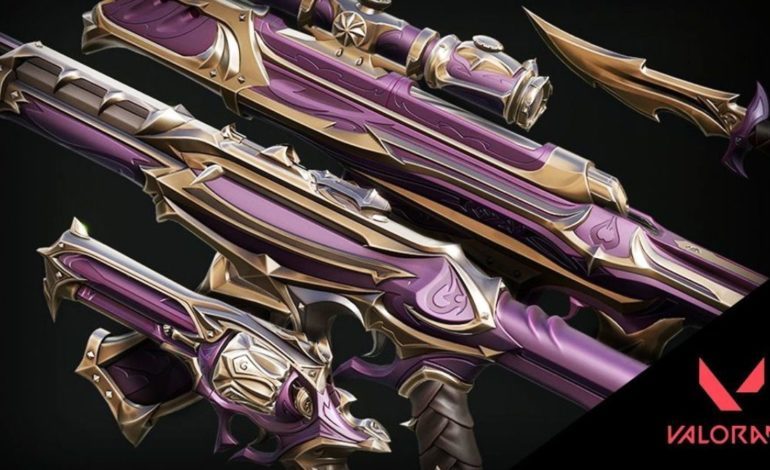

Whether it’s Fortnite, League of Legends, Call of Duty, or a wide variety of other multiplayer games, it is obvious that players love showing off their personal bling through weapons and character skins. While many of these skins look flashy and might make changes to what they are applied to, most games won’t have their cosmetics affect the actual gameplay of the game. This is no different for many of the players already purchasing in-game content for their weapons in Valorant, with a variety of different weapon skins available to buy. The Valorant store has a set rotation for the skins available for purchase, having featured skins change every two weeks and special offers changed every 2-3 days. Valorant’s Producer Preeti Khanolkar recently released a video and information about what goes into designing and creating the weapon skins for the game.
VALORANT’s premium content team is here to talk about the sweet spot between bringing your weapon skin fantasies to life and maintaining competitive integrity. Read all about it: https://t.co/7n7jEDCJgV
— VALORANT (@PlayVALORANT) May 18, 2020
Khanolkar talks about how Riot’s primary objective with the skins is to let players express themselves, “Our goal for skins is to give players another way to express who they are and what they love without ruining another player’s gameplay experience.”. This expression includes giving players the ability to progress in levels with their weapon skins, which adds further customization options and in-game effects. The skins all follow a few strict rules: they can only be seen from a first-person perspective, the skins don’t affect gameplay in any way and any skin that might be bugged needs to be fixed immediately. With this formula, the team sets out to find ideas for what might go into one of their weapon skins. “We don’t want to start making a skin line without clarity on what we’re actually trying to make,” Khanolkar said. The team starts by thinking of ideas that might be good for a skin, then ask questions to give the skin more depth and creative possibility. These questions include what materials the weapon might be made of, what mood the skin brings, or what players’ initial reactions to the skins might be. Once all of this has been decided, the team begins concept art, animation, VFX, audio creation and design playtests on the skins prior to releasing them to the store.
The final part of weapon skin creation is the feedback, as the Valorant team closely monitors players’ reactions to new content via social media and in-game use of the content. Valorant’s production team plans to continue creating new skins and cosmetics throughout the remainder of the beta and for the rest of the game’s life. From the variety of skins already available, it is clear the Valorant production team is set on bringing content that players of any kind will be satisfied with.
Play games, take surveys and take advantage of special offers to help support mxdwn. Every dollar helps keep the content you love coming every single day.
